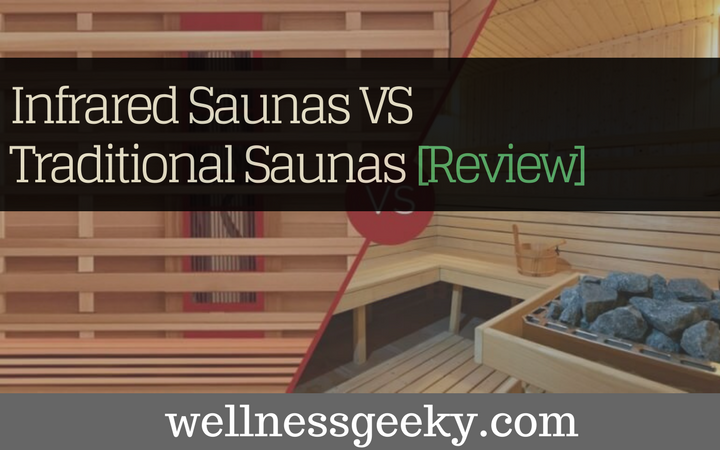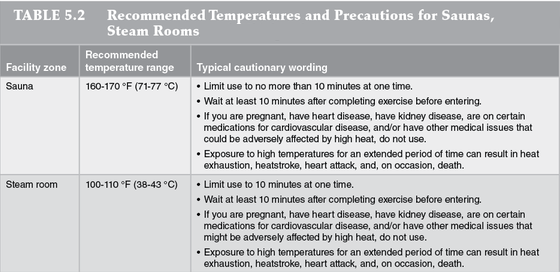
Saunas are gaining in popularity for their myriad health benefits, from boosting the immune system to weight loss.
And now that a home sauna is well within reach—an affordable, easy-to-assemble sauna kit is the norm—it's less of an indulgence and more of a lifestyle and wellness addition to your home.
There are also a lot more types of saunas to choose from than there were ten or fifteen years ago, some even available with alternative energy sources.
So, if you want to stray from a traditional dry sauna, steam sauna, or steam shower combo, you can opt for an infrared model instead.
Whichever type you choose, you are doing your heart a favor, according to the researchers at Harvard Medical School.
If you're not sure how to choose, or what is the best sauna to buy, here's a handy guide that will help you with the pros, cons, and considerations of each.
.
Traditional Saunas
A dry sauna is usually constructed of wood. It works by heating a stove inside of it, which is either electric or wood.
The stove usually contains rocks. When you douse the rocks with water, it creates the addition of steam, which in turn adds more heat (and humidity) to the air in the sauna.
How Saunas Work

A steam sauna is constructed of plastic or tile (any material that isn't porous) and heated by way of steam generation.
As the water boils in the generator, the steam is released into the air, increasing the humidity.
Even though steam saunas run at a much lower temperature, they feel as hot if not hotter than a dry sauna because the humidity keeps your sweat from evaporating.
The sweat sits on your skin, and you feel hotter.
Temperature and Humidity
Dry saunas use very high heat, up to 200 degrees, with the average being between 160 and 195 degrees Fahrenheit.
While completely safe, some people cannot tolerate this level of heat and so find it uncomfortable or intolerable.
Steam saunas are not as hot, and are generally kept between 110 and 115 degrees Fahrenheit.
Dry saunas are somewhat humid, but obviously not as humid as steam saunas, which have a 100% level of humidity.
A dry sauna usually maintains about a ten-percent level of humidity, varying of course by the application of steam via hot rocks and water.
Infrared saunas have a very low level of humidity, about the same as the inside of your house.
Power Consumption
Dry and steam saunas take up a lot of power to run, up to three (or even five times) as much as other types of saunas, like infrared.
.
Infrared Saunas
As opposed to dry and steam saunas, far infrared saunas use infrared light rays (also called far-infrared rays), which are radiant, to heat your body directly.
Depending on the size you buy, there will be a certain number of infrared heaters.
Some believe infrared light and radiant heat provide greater health benefits for the body, like weight loss and immune system boosting.
It's also shown to have some of the same benefits you get from a massage, like muscle and joint pain relief.
Some claim that infrared heat is better for your skin and aids in conditions like acne and psoriasis.
Ease of Installation
If you're looking to install a sauna in your home, an infrared sauna is probably the easiest.
They come in many sizes, some that fit up to six people, while the norm is a 2-person or 3-person capacity.
A dry sauna would be your close second, though still require some building skills (or hiring someone who has them).
Infrared saunas come in very easy-to-assemble (and move) kits now, so you don't even need any tools in order to install them.
They use a snap and buckle system and come together fairly quickly.
Conversion
If you have an existing sauna in your house and you want to convert it, most people convert it from traditional to infrared.

However, by removing the infrared heaters and installing a stove, it can be done, as both are constructed of wood, usually cedar or hemlock.
Converting to or from steam isn't possible, as steam saunas require material that is non-porous, such as tile.
Some people prefer a combination of an infrared and traditional sauna, as it enables for slight power consumption while maintaining a bit of the ambient heat.
With a smaller heater and infrared heaters, you can save on power bills, and still get the benefit of steam and humidity.
Benefits & Risks
The health benefits of sauna are many, from cardiovascular health to asthma, skin problems, and reducing pain and stress, and have been documented in several studies.
The risks are predominantly common sense. There's a risk of heatstroke and dehydration, of course, as is the case with any heat therapy or hot tub.
You should drink plenty of water when you sauna, avoid alcohol and limit the time in spend inside.
If you have a serious illness or any type of injury, you should consult your doctor before taking a sauna.
There are no dangers of infrared sauna specifically. They're the same as they are with a traditional dry or steam sauna.
Far infrared rays are completely safe, unlike UV or X-rays, and pose no health risks.
.
Do Doctors Recommend Infrared Saunas?
Have you ever heard the term infrared sauna? If you have, then you know it sounds so cool that you want to do it. Many people do because of the cold air temperature and the negative ions, but do doctors recommend infrared saunas? What do the doctors think about infrared saunas? What do we know about infrared saunas and can they benefit us?
Doctors can tell you that they don't recommend them, but they do recommend saunas as they give other people health benefits. So, they have to recommend them if they are beneficial. The benefits of Infrared saunas can be negative ion saunas, but many people don't know about traditional infrared saunas and their benefits. What's the Difference Between Infrared Saunas and Heat? Saunas that use heat have hot and cold elements in them. For example, an infrared sauna has one element that is not hot or cold. That's why infrared saunas are called infrared saunas.
Frequently Asked Questions
Infrared saunas get hot but much less so than traditional saunas. The thing to remember is that the heaters emit rays that heat your body, not the room.
Do Infrared Saunas Get Hot?
The typical heating temperature is between 110 and 130 degrees Fahrenheit. Rather than relying on heating the room to in turn heat your body, however, the infrared rays heat your body directly.
How Long Does it Take to Heat the Sauna?
It takes about 30 to 45 minutes to heat up, depending on the size of the sauna. A four or six-person sauna session can take up to an hour.
Do Infrared Saunas Use a Lot of Electricity?
No, infrared saunas are highly efficient. They use a third to a fifth of the amount of energy it takes to run a traditional sauna experience, just pennies per session (approximately twenty cents per hour, depending on the size of the sauna).
Are infrared saunas safe?

The dangers to be aware of are the same as with any other type of sauna.
Stay hydrated, avoid alcohol, and limit your time inside.
Is Infrared Sauna Better Than Wet Sauna?
In the realm of saunas, the debate between infrared saunas and wet saunas has generated considerable interest and discussion. To determine whether one is inherently "better" than the other, it's essential to consider various factors, including their mechanisms, health benefits, and individual preferences.
Infrared saunas utilize infrared heaters to emit radiant heat, which directly heats the body without significantly raising the surrounding air temperature. On the other hand, wet saunas, also known as traditional Finnish saunas, rely on heating stones to generate high temperatures and release steam when water is poured onto the stones. Both saunas induce sweating, which is believed to have numerous health benefits.
The key distinction lies in the heat source and how it affects the body. Infrared saunas penetrate the skin more deeply, generating heat within the body, which can promote detoxification, improve circulation, and potentially alleviate certain health conditions such as chronic pain, arthritis, and muscle stiffness. Additionally, some studies suggest that infrared saunas may aid in weight loss and have cardiovascular benefits.
Wet saunas, conversely, create a more intense heat, promoting profuse sweating, which can help with toxin elimination, skin purification, and relaxation. The heat and steam can also have a positive impact on respiratory health by clearing airways and reducing congestion. Furthermore, wet saunas are associated with the release of endorphins, providing stress relief and enhancing mental well-being.
The choice between infrared and wet saunas largely depends on individual preferences and specific health goals. Infrared saunas are favored by those seeking deep tissue penetration and potential therapeutic benefits. They are also more energy-efficient and easier to install. Wet saunas, on the other hand, appeal to those who enjoy the traditional sauna experience, with its intense heat and steam. The social aspect of wet saunas, often shared with friends or family, adds to their appeal.
In conclusion, the superiority of one sauna type over the other cannot be definitively established, as it hinges on personal preferences and desired health outcomes. Infrared saunas excel in deep tissue heating and energy efficiency, while wet saunas offer the traditional sauna experience and potential benefits for respiratory health. Ultimately, the "better" sauna is the one that aligns with an individual's needs, preferences, and health objectives. Some may even opt for both types to enjoy a well-rounded sauna experience and maximize the potential health benefits.
Conclusion
Whether you prefer wet or dry heat, saunas are a healthy addition to your lifestyle.
And now that they're easier than ever to install and highly efficient (especially if you go the route of infrared), it's a much more feasible project for your next DIY weekend undertaking.
The health benefits are many, and the results lasting. It's a good addition to your home and wellness, and might even save a few trips to the gym.
.
